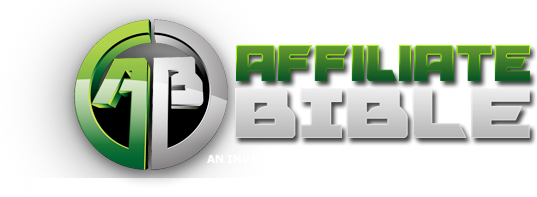Kickstarter is one of those interesting website concepts that have really taken off in the past year. Yet you might not have really sat down and looked at Kickstarter or how it really works. The media don’t talk about the “core” of Kickstarter which is people with small projects just looking to get some money in advance for a project – they are focused on the Kickstarter projects that make hundreds of thousands of dollars overnight.
I wanted to talk to one of the smaller users of Kickstarter – someone with a standard project, looking for a small amount of money, and with no crazy marketing machine behind him. I spoke to Edward Scimia. Many of you may already know Ed(https://www.edwardscimia.com/) – he is a freelance content writer, and one of the best gambling writers online. (I’ve personally used him for tons of articles, and would give him my highest recommendation).
Ed is a published author, however recently decided to go the Kickstarter route for his next book. I caught up with Ed to talk about his project, and get some insight into how it all works.
 Before we get into all the Kickstarter stuff – what do you do for a living?
Before we get into all the Kickstarter stuff – what do you do for a living?  I’m a freelance writer. Most of my work is related to online content writing: I create all of the content for chess.about.com, and also write content for gambling affiliates and other clients. In addition, I’ve done some self-publishing over the past year. That’s included a number of books that were written for the Kindle, such as Catching Fish, a book aimed at recreational poker players who want to beat live $1/$2 no-limit hold’em games.
I’m a freelance writer. Most of my work is related to online content writing: I create all of the content for chess.about.com, and also write content for gambling affiliates and other clients. In addition, I’ve done some self-publishing over the past year. That’s included a number of books that were written for the Kindle, such as Catching Fish, a book aimed at recreational poker players who want to beat live $1/$2 no-limit hold’em games. Tell us about your Kickstarter.
Tell us about your Kickstarter. The Kickstarter is for a book titled So Bad, It’s Good!, which I’m currently in the process of writing. It’s a book about the best of bad movies — the kinds of movies that are terrible, but are still fun to watch with friends. The book will have profiles of more than 50 different films from a variety of different genres. The goal is to make the book a guide that fans of these kids of films can use to find new picks for their bad movie nights.
The Kickstarter is for a book titled So Bad, It’s Good!, which I’m currently in the process of writing. It’s a book about the best of bad movies — the kinds of movies that are terrible, but are still fun to watch with friends. The book will have profiles of more than 50 different films from a variety of different genres. The goal is to make the book a guide that fans of these kids of films can use to find new picks for their bad movie nights.  You’ve published 4 books and a couple of game guides previously without going the Kickstarter route. What made you decide to go to Kickstarter for this book?
You’ve published 4 books and a couple of game guides previously without going the Kickstarter route. What made you decide to go to Kickstarter for this book? When I first started telling people about this book idea, I got a lot of very positive feedback. That made me think that the book could be viable in a physical, paperback form rather than as just another e-book written for the Kindle. However, it would still be a niche project, and I didn’t want to try to go through the traditional publishing route: I’ve had some success with self-publishing, and even if I put the time and effort into trying to pitch a book like this one to a “real” publisher, I’m not sure there’d be any interest.
When I first started telling people about this book idea, I got a lot of very positive feedback. That made me think that the book could be viable in a physical, paperback form rather than as just another e-book written for the Kindle. However, it would still be a niche project, and I didn’t want to try to go through the traditional publishing route: I’ve had some success with self-publishing, and even if I put the time and effort into trying to pitch a book like this one to a “real” publisher, I’m not sure there’d be any interest.
However, while self-publishing for the Kindle doesn’t require much of a financial investment, having actual paperback copies published does. Kickstarter was a great way to raise money for the publishing costs for a couple of different reasons: it allowed me to take a lot of small pledge, and it gave me an idea of the level of interest in the book itself. There are a lot of self-publishing options out there, and the amount I raise through the Kickstarter will determine whether I go with a fairly basic publishing solution, or whether I will have a higher quality book with some paid marketing for it. If more people are willing to pledge money toward the book, they get a better product — and it probably means there’s a good deal of interest, so paying for better production will have been worth it.
 I assume you will be planning on writing more books in the future. Will you ALWAYS be going the Kickstarter route from now on?
I assume you will be planning on writing more books in the future. Will you ALWAYS be going the Kickstarter route from now on? Not necessarily. I think Kickstarter a great alternative to the more traditional avenues for publishing a book or funding a creative project, and I’ll probably use it again in the future – in fact, I have at least one idea that I think would make an excellent Kickstarter project once I’m done creating this book. But I can also imagine writing books that I’d try to publish through more traditional channels rather than going the self-publishing route. While the ability for authors to independently self-publish books has come a long way from even a few years ago, there are still definite advantages that come with having a publisher working with you – particularly when it comes to marketing and distribution.
Not necessarily. I think Kickstarter a great alternative to the more traditional avenues for publishing a book or funding a creative project, and I’ll probably use it again in the future – in fact, I have at least one idea that I think would make an excellent Kickstarter project once I’m done creating this book. But I can also imagine writing books that I’d try to publish through more traditional channels rather than going the self-publishing route. While the ability for authors to independently self-publish books has come a long way from even a few years ago, there are still definite advantages that come with having a publisher working with you – particularly when it comes to marketing and distribution. How does Kickstarter work? Do you get the money immediately after the project deadline is over? How much do they take in fees? And what happens if you didn’t write the book?
How does Kickstarter work? Do you get the money immediately after the project deadline is over? How much do they take in fees? And what happens if you didn’t write the book? With Kickstarter, you only get paid if you raise at least the amount you set as a goal. My goal was set at $1,500 — enough to publish a fairly bare bones book after taking into consideration Kickstarter’s fees and the cost of sending out rewards to backers. I was able to reach that goal in less than a week, even though I had allowed for 28 days to raise funds. The Kickstarter will remain open until the end of that period (August 2), so people can continue pledging until that time. I should receive the funds a couple weeks after the funding ends. Kickstarter takes 5% of the total amount raised as a fee; the Amazon Payments system they use as a backend also takes 3-5%. That means that project creators will end up with a little over 90% of the money pledged.
With Kickstarter, you only get paid if you raise at least the amount you set as a goal. My goal was set at $1,500 — enough to publish a fairly bare bones book after taking into consideration Kickstarter’s fees and the cost of sending out rewards to backers. I was able to reach that goal in less than a week, even though I had allowed for 28 days to raise funds. The Kickstarter will remain open until the end of that period (August 2), so people can continue pledging until that time. I should receive the funds a couple weeks after the funding ends. Kickstarter takes 5% of the total amount raised as a fee; the Amazon Payments system they use as a backend also takes 3-5%. That means that project creators will end up with a little over 90% of the money pledged.
What happens if I didn’t write the book is an interesting question. There have definitely been some phantom projects in the past, and one issue is that there’s really no way for Kickstarter to hold the project creators accountable. To be fair, even in most of these situations, it doesn’t seem like it was as simple as someone inventing a fake project and running of with the money; instead, it’s usually someone who got in over their head, couldn’t complete the project, and then gave up without producing the promised project.
The biggest defense against this happening is what will happen to the reputation of the project creators. In my case, while I’m far from being in any way famous, I am sort of a public figure because of the work I’ve done at About.com and through my books, and many affiliates know me in the gambling industry as well. Failing to produce a book after collecting pledges would be awful for my reputation, so I definitely have plenty of incentive to finish the book!
 Do you find accomplishing your goal so early means less money comes in after that?
Do you find accomplishing your goal so early means less money comes in after that?
The pattern of how money is pledged to Kickstarter projects seems pretty consistent from project to project, no matter how much a project is trying to raise. The first few days after launch, there’s an influx of donations — these are the people who are really excited about your project and can’t wait to get on board, along with any friends and family who want to throw in some support. That’s followed by a slow trickle of donations throughout the life of the project. During the last 2-3 days before the Kickstarter ends, there’s another uptick in pledges, meaning most of the money comes in the first few and the last few days. Interestingly, this seems to happen no matter how close you are to your goal: you can pretty much count on an initial rush, followed by a lull and one final push at the end. That pattern seems to be holding true for my book, as pledges are slowly coming in, but not nearly at the rate they did for the first five days. Only time will tell if there’s a surge at the end for me, too.
 When you were setting your Kickstarter up – was there solid guides to help you get started, set up reward levels etc? Or did you have to do your own research on that matter?
When you were setting your Kickstarter up – was there solid guides to help you get started, set up reward levels etc? Or did you have to do your own research on that matter? I’d say it’s a mix of both. Kickstarter does provide some guides on good practices to follow: for instance, telling project creators the basic kinds of rewards that are popular, how much people generally like to donate, and that making a video is fairly important, even if it’s nothing fancy (most of my video is simply me reading a script over my project logo). Beyond that, research is really key. It’s important to look at projects similar to the one you’re planning to see how to price your rewards reasonably.
I’d say it’s a mix of both. Kickstarter does provide some guides on good practices to follow: for instance, telling project creators the basic kinds of rewards that are popular, how much people generally like to donate, and that making a video is fairly important, even if it’s nothing fancy (most of my video is simply me reading a script over my project logo). Beyond that, research is really key. It’s important to look at projects similar to the one you’re planning to see how to price your rewards reasonably.
If you’re creating something people can buy — like my book — that should be the centerpiece of a lot of the rewards, of course. You can also be creative, especially at the higher levels; for instance, I’ve allowed a limited number of people to contribute their thoughts to the book, but only at the $100 backer level. The keys are to find a balance between having low-cost ways for people to contribute, making sure the prices are high enough that you’re actually raising money after accounting for fees and rewards, and having a couple of higher priced options to capture the maximum from people who really want to be a big part of your project.
 Do Kickstarter do any of the marketing for you? Or is this one of those things where any potential investments rely 100% on your own marketing?
Do Kickstarter do any of the marketing for you? Or is this one of those things where any potential investments rely 100% on your own marketing? Kickstarter doesn’t do much in the way of active marketing. However, they do have a number of ways to search for projects that can lead your project being highlighted on their website. There’s a “Discover” section on the site that allows users to search for certain kinds of projects, see which projects have been popular over the past week, and so on. Kickstarter also chooses some “Staff Picks” that get extra promotion. My book isn’t a Staff Pick, but I’ve still received 20% of my pledges from people who have discovered the project on Kickstarter. Of course, that means 80% has been raised through my own marketing, so doing the work to promote on your own is critical.
Kickstarter doesn’t do much in the way of active marketing. However, they do have a number of ways to search for projects that can lead your project being highlighted on their website. There’s a “Discover” section on the site that allows users to search for certain kinds of projects, see which projects have been popular over the past week, and so on. Kickstarter also chooses some “Staff Picks” that get extra promotion. My book isn’t a Staff Pick, but I’ve still received 20% of my pledges from people who have discovered the project on Kickstarter. Of course, that means 80% has been raised through my own marketing, so doing the work to promote on your own is critical. What sort of marketing have you did for your Kickstarter? And what method do you think was the most successful?
What sort of marketing have you did for your Kickstarter? And what method do you think was the most successful? Most of my marketing has been through Twitter and Facebook, with some forum posts scattered around as well. I’d like to say that my brilliant marketing made all the difference, but the truth is that the biggest factor was getting someone who is well known to bad movie fans to write the book! Allison Pregler does a show called Obscurus Lupa Presents on ThatGuyWithTheGlasses.com, a site that hosts a number of different video reviewers. Her show is all about b-movies, and she comes across as someone who isn’t just out to mock these films, but also loves watching them. That was exactly the voice I wanted for the book, so I approached her about writing a foreword. She was very enthusiastic about contributing, and not only wrote the foreword, but also wrote a bonus chapter for the book that’s only available as a reward for pledging through Kickstarter.
Most of my marketing has been through Twitter and Facebook, with some forum posts scattered around as well. I’d like to say that my brilliant marketing made all the difference, but the truth is that the biggest factor was getting someone who is well known to bad movie fans to write the book! Allison Pregler does a show called Obscurus Lupa Presents on ThatGuyWithTheGlasses.com, a site that hosts a number of different video reviewers. Her show is all about b-movies, and she comes across as someone who isn’t just out to mock these films, but also loves watching them. That was exactly the voice I wanted for the book, so I approached her about writing a foreword. She was very enthusiastic about contributing, and not only wrote the foreword, but also wrote a bonus chapter for the book that’s only available as a reward for pledging through Kickstarter.
She’s also been great about promoting the book to her fans. Kickstarter provides project creators with tools that help them see where their pledges are coming from, and while it’s not possible to nail this down to the exact dollar, I’d say that about half of the money I’ve raised has been thanks to Allison’s involvement with the book.
In other words, I’d say that getting her involved was easily the most successful marketing strategy I’ve come up with. Now, that doesn’t mean you should just find anyone more famous than yourself and attach them to a project or product you’re working on: people will usually see through that. But if you can find someone who has a strong following who legitimately adds value to whatever it is you’re creating, that’s a great way to raise the profile of whatever you’re working on while also improving the final product for your audience.
 Awesome thinking outside the box idea there. If anyone reading wants to start their own Kickstarter – what tips could you offer them based on your own experience?
Awesome thinking outside the box idea there. If anyone reading wants to start their own Kickstarter – what tips could you offer them based on your own experience? The best advice I can give is to put in the time and effort to make a great pitch for your product before you start. Make sure you make a video for your project: it doesn’t have to be fancy, but it helps generate interest and shows you took the project seriously. For instance, mine is mostly just me speaking over a picture of the project logo, along with a short introduction that I made with my laptop’s webcam. Also, don’t be shy about marketing your idea: push it on Twitter and Facebook or whatever other social media outlets you like, and seek out people who might be especially interested in your project, as they’ll be likely not only to pledge money, but tell others about your project, too. Finally, make sure the rewards you offer are interesting; I think offering a couple of things that are only available for supporters of the Kickstarter really helps induce people to donate to your project.
The best advice I can give is to put in the time and effort to make a great pitch for your product before you start. Make sure you make a video for your project: it doesn’t have to be fancy, but it helps generate interest and shows you took the project seriously. For instance, mine is mostly just me speaking over a picture of the project logo, along with a short introduction that I made with my laptop’s webcam. Also, don’t be shy about marketing your idea: push it on Twitter and Facebook or whatever other social media outlets you like, and seek out people who might be especially interested in your project, as they’ll be likely not only to pledge money, but tell others about your project, too. Finally, make sure the rewards you offer are interesting; I think offering a couple of things that are only available for supporters of the Kickstarter really helps induce people to donate to your project. Thanks very much for the awesome interview Ed, and all the valuable insight that you offered.
Thanks very much for the awesome interview Ed, and all the valuable insight that you offered.
Hopefully some of you guys reading can thank Ed by supporting his Kickstarter.

 Dealer Dan, pictured here with WWE Superstar Mick Foley, has been in internet marketing since 1996. He likes hugs, long walks on the beach, and making money while wearing his jammy jams. For more information, you can read all
Dealer Dan, pictured here with WWE Superstar Mick Foley, has been in internet marketing since 1996. He likes hugs, long walks on the beach, and making money while wearing his jammy jams. For more information, you can read all 












